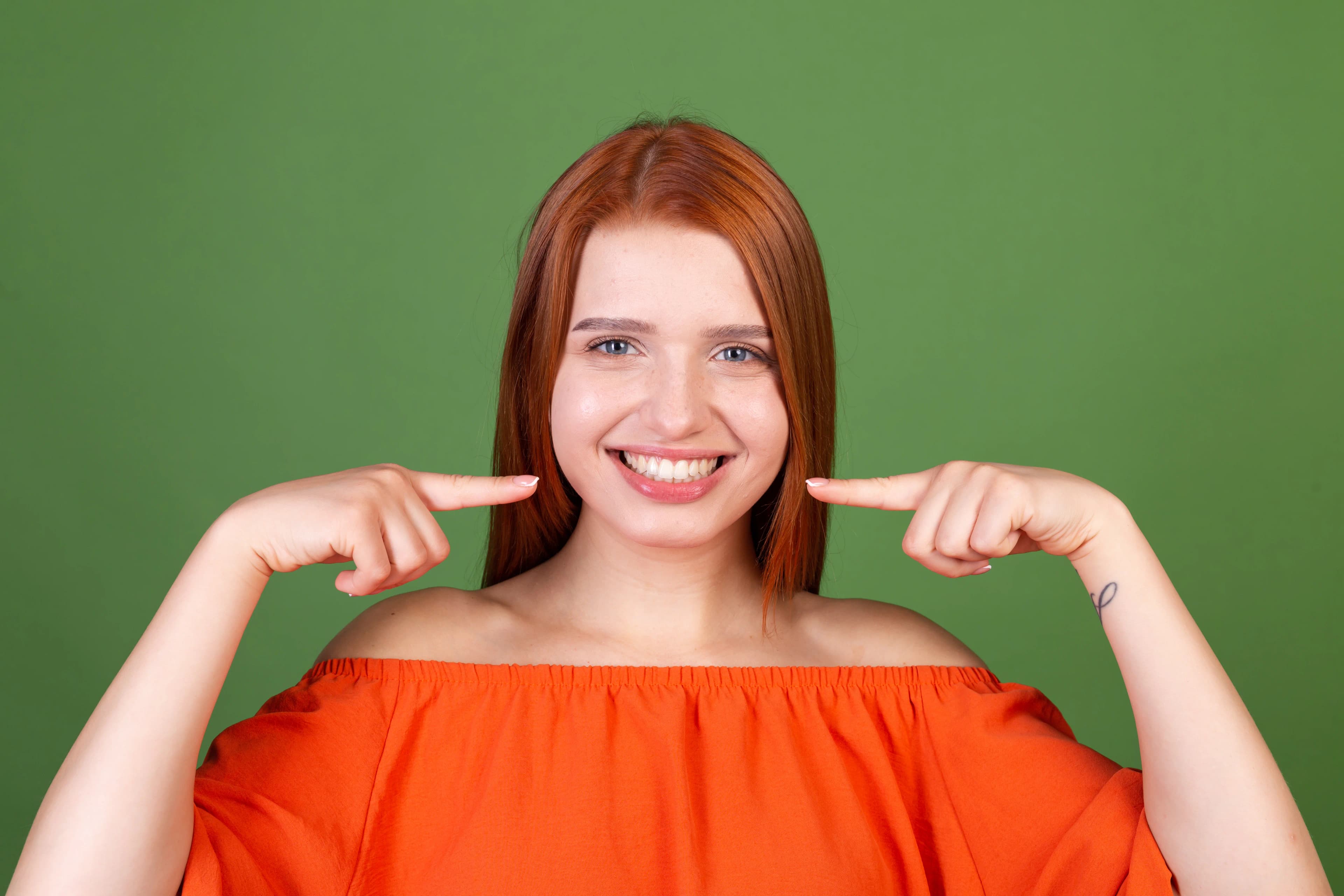In case you’re thinking about improving your appearance and smile, you should know about what the types and processes entail. You can ask your dentist about the difference between getting dental laminates and dental veneers, to make an informed decision about which one is right for you. Both dental laminates and dental veneers are common procedures done to improve the overall appearance of your smile. From color to shape and size, both options ultimately provide non-invasive treatments for unpleasant smiles. But let’s see what the fundamental difference between the two is.
What are dental veneers?
Dental veneers arethin, tooth-colored shells placed on the surface of the teeth to improve appearance, giving you a better-looking smile. They’re often made from porcelain or resin composite materials and are permanently bonded to your teeth. This procedure requires. a small amount of enamel to be removed for them to fit your teeth.
What are the benefits of dental veneers?
The biggest benefit of veneer has to be the improvement in the appearance of your teeth. You’ll have a brighter and more even smile. You may need dental veneers if you have:
broken or chipped teeth
severe discoloration or uneven coloring that can’t be fixed with whitening
gaps in the teeth
smaller-than-average teeth
pointed or unusually shaped teeth
Although some people only get one veneer to fix a broken or chipped tooth, many will get between 6-8 veneers to create an even, symmetrical smile. Since the top front 8 teeth are most visible when you smile, they are the common veneer targets. You may be surprised by how much of a difference a dental veneer can make, turning chipped, cracked, misshapen, or stained teeth into evenly shaped, naturally colored teeth. Based on the type of veneer you choose, it can last you more than a decade.

Dental veneer advantages
Providing a beautiful and natural appearance
Gum tissue that bears the proclaim well
Proclaim veneers being stain-resistant
The ability to choose the color of porcelain veneer which can make dark teeth appear whiter
Dental veneer disadvantages
It is an irreversible procedure
Veneers are more expensive compared to resin composite bonding
It is not amendable if they chip or crack
Teeth may become sensitive to hot and cold food because of tooth enamel removal
Since veneers don’t exactly have the same color as your tooth, and their color is not changeable after wearing on a tooth; if you would like to whiten your tooth, you should do this before getting a veneer.
You should avoid things that put pressure on your veneers, such as: biting your nails, chewing on pencils, ice, or other hard objects.
Since veneers may decay, your teeth may need full coverage.
Veneers are not good options for people with unhealthy teeth
Those who clench and grind their teeth are not good candidates for porcelain veneer because these activities may cause the veneer to crack or chip.

What are dental laminates?
Dental laminates have the same function as veneers but differ in the sense that they are much thinner and require less amount of enamel to be removed for them to be placed. Dental laminate is a thin shell designed with tooth-colored material based on each individual's needs. These shells are bonded to the front surface of the teeth to change their color, shape, size, or length and improve their appearance.
Dental laminate advantages
Since laminate is made for each individual based on their original teeth, it’s impossible to distinguish the difference between a laminate and a natural tooth. Laminates unlike natural teeth are resistant to tea and coffee stains because of using high technology materials for making them.
Dental laminate disadvantages
The process of making porcelain laminate takes at least a week. If the laminates are attached correctly and tooth destruction factors are limited, you may use your laminated teeth like natural teeth. But despite their high stability laminates may be fragile, as they should not be under pressure as natural teeth. For instance, you should avoid nail-biting, ice-eating, or opening the drinking canes with your laminates.

Does the difference between dental veneers and laminates matter?
It’s important to know the difference between dental laminates and dental veneers so you can decide the best option for your teeth and smile. For example, if you have crooked teeth or gaps between them, veneers are the best choice for you. But if you have minor chips or discoloration, laminates may suit you best.
Primary differences
Dental Veneers
Dental veneers are made of two different materials namely composites and porcelain. Since composite veneers are prone to staining, they are the less preferred choice. However, since composite veneers require less prep work on your natural teeth, you can walk out with them on the same day. Porcelain veneers are typically double the price of composite veneers and require the removal of the enamel of their placement. If chipped or damaged, porcelain veneers cannot be repaired. But their appearance is more natural and can last up to ten years.
Laminates
Laminates can be referred to as advanced porcelain veneers as they both share the same function and benefits. However, when placing laminates, the enamel and structure of the tooth do not have to be altered. While this may be better in the long term for the health of the tooth, getting laminates still has its disadvantages. Even though laminates are only as thick as a contact lens and thinner than porcelain veneers, if the teeth are not altered, they can seem bulky. Laminates are more expensive compared to porcelain veneers.

Both can improve the appearance of teeth
Both veneers and dental laminates can restore a person’s smile. Both treatments can change the shape and size of teeth, both attach to the front of the tooth, cover any flaws, and make your smile look presentable. Since both veneers and lamination are made of porcelain, your dentist can make them to the color of your liking. They can also both make crooked teeth straighter and fix gaps in the mouth.
Conclusion
In conclusion, dental veneers and laminates are both cosmetic treatments used to enhance the appearance of teeth, but they differ in several key aspects. Veneers are typically made from porcelain or composite materials and require the removal of a portion of the tooth enamel to fit properly, which can be irreversible. They are thicker than laminates and can address more significant dental issues such as crooked teeth or gaps. Laminates, on the other hand, are much thinner, resembling the thickness of a contact lens, and require less enamel removal, making them a less invasive option. They are best suited for minor cosmetic improvements like discoloration or small chips. Both options offer a route to improved aesthetics and function, but the choice between them will depend on the individual's dental condition, desired outcome, and the professional recommendation of their dentist.